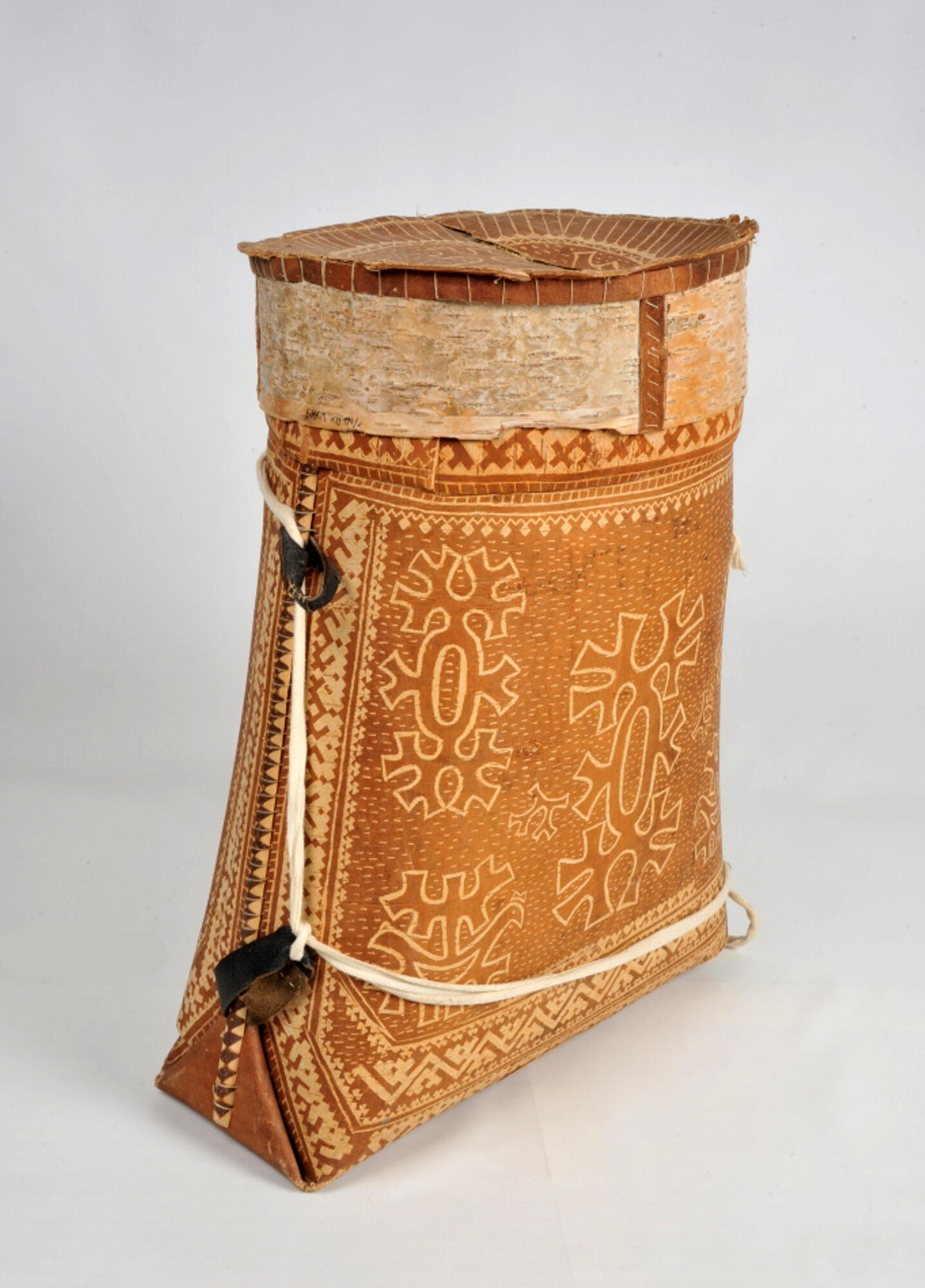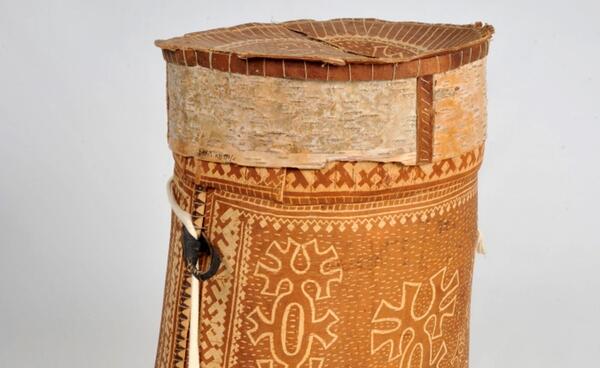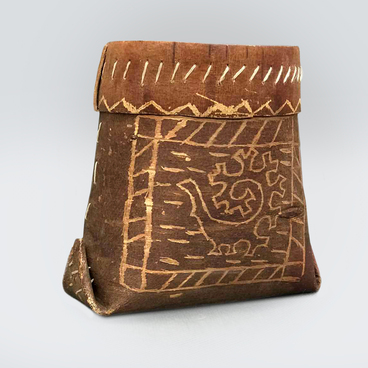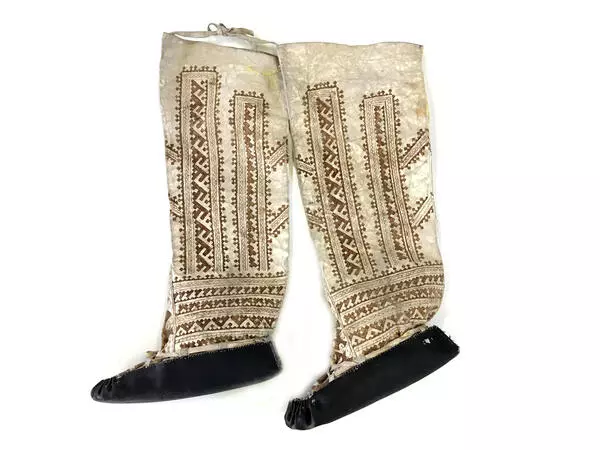A birch bark shoulder basket with high walls is called ‘hint’ in the Khanty language. It is made from two pieces of birch bark, fastened on the sides with the help of bird cherry twigs. The shape of the hint resembles a trapezoid, and its upper part — the mouth — is circular in its shape. The mouth stays round due to a strong wooden hoop. Buckskin loops are sewn on the sides of the hint, into which shoulder straps are inserted. A traditional geometrical ornament is applied all over the basket, when the dark layer of birch bark is scraped off with a knife.
Birch bark is one of the most common materials in the life of the Khanty people. The creation of birch bark products both for everyday needs and for sale is considered a women’s occupation. The craft traditions are still kept by many Khanty families. Birch bark is often used to make containers of different shapes for storing dry foods or handicraft items. Birch bark items are still used quite often nowadays. For example, people take a “hint”, when the go to pick mushrooms, and a smaller basket called “nabirushka” they go berry-picking.
Items made of “Kazym” birch bark, made by the Kazym Khanty, have particular artistic value. This northern people, living near the Kazym River, are more skillful in processing birch bark. The Khanty remove birch bark from the trees three times a year (in spring, before sap flow; in July, when the rosehip blooms; and in autumn, when the leaves fall). First of all, a vertical incision is made to the bast on the tree (the inner part of the bark). Then two horizontal incisions are made — they determine the size of the piece that is to be removed. After that, the white rough top layer is scraped off.
Artisans try not to damage the trunk when they collect birch bark. They remove only the minimum amount of the birch bark needed, without making any extra supplies, so that it does not dry out from long storage, but remains elastic and soft. This material is usually kept in a dark, cool place.
The collected birch bark must be prepared for work (boiled) before making a hint or some other item. Separate pieces of birch bark are rolled into tubes, placed vertically in a pot that is filled with water, tightly covered with moss and cooked for 10-12 hours. After that, the birch bark becomes elastic and strong, which makes it a convenient material for sewing. Sometimes birch bark is boiled in fish oil. Then it becomes especially durable, water-resistant, and does not crumble in the cold.
Birch bark is one of the most common materials in the life of the Khanty people. The creation of birch bark products both for everyday needs and for sale is considered a women’s occupation. The craft traditions are still kept by many Khanty families. Birch bark is often used to make containers of different shapes for storing dry foods or handicraft items. Birch bark items are still used quite often nowadays. For example, people take a “hint”, when the go to pick mushrooms, and a smaller basket called “nabirushka” they go berry-picking.
Items made of “Kazym” birch bark, made by the Kazym Khanty, have particular artistic value. This northern people, living near the Kazym River, are more skillful in processing birch bark. The Khanty remove birch bark from the trees three times a year (in spring, before sap flow; in July, when the rosehip blooms; and in autumn, when the leaves fall). First of all, a vertical incision is made to the bast on the tree (the inner part of the bark). Then two horizontal incisions are made — they determine the size of the piece that is to be removed. After that, the white rough top layer is scraped off.
Artisans try not to damage the trunk when they collect birch bark. They remove only the minimum amount of the birch bark needed, without making any extra supplies, so that it does not dry out from long storage, but remains elastic and soft. This material is usually kept in a dark, cool place.
The collected birch bark must be prepared for work (boiled) before making a hint or some other item. Separate pieces of birch bark are rolled into tubes, placed vertically in a pot that is filled with water, tightly covered with moss and cooked for 10-12 hours. After that, the birch bark becomes elastic and strong, which makes it a convenient material for sewing. Sometimes birch bark is boiled in fish oil. Then it becomes especially durable, water-resistant, and does not crumble in the cold.
Birch bark items are sewn together with special threads made of deer or elk tendons, and sometimes with the threads made up of horse tail fibers. Nowadays, artisans often use modern nylon threads instead.




